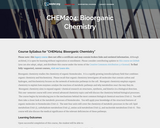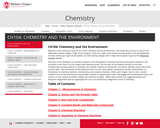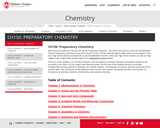We designed this book to help you attain a confident, competent, and coherent understanding of basic chemistry, in particular of the chemistry associated with organisms and their origins. That said, this is not a chemistry for biologists or non-scientists book but rather an approach to the difficult and often counterintuitive ideas at the heart of chemistry, for an intelligent and engaged student who, often quite reasonably, finds these ideas unbelievable, arbitrary, or incoherent. Our goal is to assist you in developing an understanding of the foundations of chemistry, so that you can apply these ideas to a range of new situations.
Materials integral to the CLUE curriculum but that are not covered exhaustively in the text are:
Common chemistry calculations, illustrated by YouTube videos, including:
Stoichiometry;
Energy, frequency, and wavelength conversions;
Mass energy conversions;
Thermochemistry, including specific heat, bond energy and entropy, enthalpy, and Gibbs energy;
Equilibrium calculations, pH and Ka;
Reaction rates and rate law determinations; and
Buffers and linked chemical reaction energy changes.
Common skills, including:
Electron configurations, particularly to determine the number of valence electrons;
Drawing Lewis structures;
VESPR;
Assigning oxidation numbers; and
Using curved arrows to predict the outcome of simple reactions.
Table of Contents:
1. Atoms
2. Electrons and Orbitals
3. Elements, Bonding, and Physical Properties
4. Heterogeneous Compounds
5. Systems Thinking
6. Solutions
7. A Field Guide to Chemical Reactions
8. How Far? How Fast?
9. Reaction Systems


















